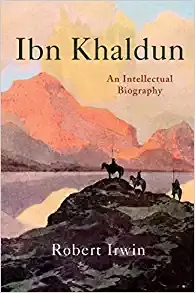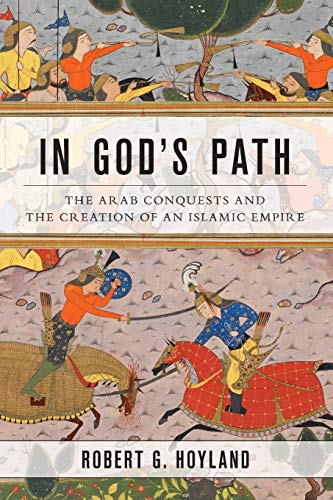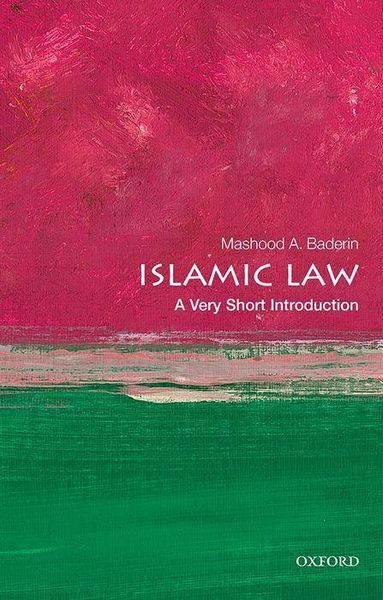|
Ibn Khaldun: An Intellectual Biography
By Robert Irwin Published in February 2018 272 Pages Thibault’s Score: 4/5 Ibn Khaldun: An Intellectual Biography is a study guide for Ibn Khaldun’s Muqaddimah. I find reading historical books to be very difficult, especially if they are more than a few centuries old. Even when translated in modern English, I often lack the necessary context to really understand many of the key points. This challenge is compounded when dealing with non-Western cultures that I am less familiar with, such as the Middle East. This book is a short study guide to the work of Ibn Khaldun. Irwin neatly summarizes Khaldun’s ideas, gives necessary historical context, and explains his possible influences. Writing this sort of book, and making it good, is extremely challenging. Usually, reading this kind of book is either an exercise in pedantic pseudo-intellectualism or is the equivalent of reading the phone book. Far too many of these books use hollow but vaguely intellectual sounding gobbledygook to make their books sound more profound. A good hint is when they talk about the “dimensionality” of a given topic or the “communicativeness of ideas.” Irwin makes none of the fatal sins that authors usually make when writing this sort of book. He avoids using all inflated language, instead choosing the path of conciseness and clarity. Ibn Khaldun was an endless source of ideas. He covered topics as diverse as the Kharijite revolution of North Africa, genie hunting in the deserts, and developed theories of taxation that are remarkably similar to those of 20th century economist Arthur Laffer. However, Ibn Khaldun is most well known for his concept of Asabiyyah. Asabiyyah is an Arabic word that doesn’t translate well into English. It has been alternatively translated with notions as diverse as “esprit de corps,” “ethnocentrism,” or “love for freedom.” None of these words succeed in capturing its essence. The core idea of Asabiyyah is that history is cyclical. He divides the world into two groups. One one side, there are tough desert people (Bedouins). These are either nomads or subsistence farmers. These bedouins develop simple pious religious ethics, a tradition of personal austerity, have group solidarity, have anti-state political ideologies / support small government, and are tough. These traits are collectively called Asabiyyah. On the other side, there are sedentary peoples living in cities. They lose their Asabiyyah - namely they discard religion, have profligate personal morals, have strong out-group preferences, want big government in order to compensate for their poor morals, and are generally weak. Over time, the powerful city-based nations and states decline. As the city dwellers lose their Asabiyyah, tough desert peoples come, and kill their political elites. The Bedouins become the new elites because they have more Asabiyyah. However, the city life corrupts the Bedouins. Over time, the Bedouins lose their Asabiyyah - coming to emulate the very city dwellers their forefathers defeated. This opens the gate for a new generation of tough nomads to replace them. There is some debate about the applicability of the theory of Asabiyyah. Some historians and commentators think that it only strictly applies to the desert tribes of North Africa. Others would take a more generalized interpretation, seeing non-desert peoples like the Germanic goths or Mongols following similar developmental paths. The book concludes with Irwin talking about how various different groups perceived Ibn Khaldun over time. Many Muslims initially rejected or ignored Ibn Khaldun, as Islam entered its internal dark ages around the time Europe entered the renaissance. Ibn Khaldun was rediscovered by the French when they colonized North Africa, and the French used Khaldun’s work to point out how backwards Islamic societies were. Later, Ibn Khaldun was rehabilitated, and new translations were made. These new translations used Ibn Khaldun to justify Arab nationalism, and the removal of the colonial authorities. Ibn Khaldun also influenced science fiction, with Frank Herbert’s Dune series explicitly modeled on Ibn Khaldun’s Muqaddimah. So do I recommend this book? Probably not, it's quite niche, and not of interest for most readers. But, if you are planning on reading the Muqaddimah or any other surviving fragmentary works by Ibn Khaldun, then it is the must read study guide. I wish other Medieval authors had study guides as good as this - especially with authors like Thomas of Aquinas or Paul the Deacon. Instead, it looks like I will be stuck with the fluffy pseudointellectual study guides when I read those books.
0 Comments
In God’s Path: The Arab Conquests and the Creation of an Islamic Empire
By Robert G. Hoyland Published in 2014 Thibault’s Score: 3/5 The Arabs burst out of Arabia with incredible speed, rapidly conquering the entire known world. Within two hundred years, Islam had spread from Morocco to Malaysia. The speed of the Islamic conquests often baffles readers. However, the author points out that Christianity spread at a similar pace. He opens the book by telling a legend about some Christian saints who were fleeing the persecution of a pagan emperor. They hide in a cave and go to sleep. When they wake up, there are churches everywhere and the whole world has become Christian. To help them escape persecution, God had put them to sleep for 200 years. Another key element is that Islam was mostly a religion that only applied to elites. Conversion was discouraged (at first). As a result, most regions remained Zoroastrian, Christian, Jewish, or pagan for centuries. For example, in Egypt, the bulk of the population remained Christian until after the Crusades. In Persia, Muslims came to dominate the cities, but the mountainous and rural regions would remain Zoroastrian for four hundred years after the conquest. There is a particularly fascinating aspect of this book for anarchist-adjacent readers like me: the conquering armies were stateless and leaderless. The Caliphs were mostly religious figures, and had little practical authority or say about what happened on the field. Instead, the conquests were spearheaded by a decentralized network of warlords. If you want to learn about how anarchist-adjacent armies can conquer vast swaths of land, then this might be an interesting book for you. The decentralized nature of warfare resulted in a wide variety of outcomes. Some warlords were extremely merciful, while others were cruel. This can be seen during the siege of Damascus. Damascus, in modern day Syria, was a Byzantine fortress. It was attacked by two separate Muslim war parties that teamed up. One party stormed the citadel, and began a slaughter. In the early minutes of the slaughter, the Byzantine general (a man called Thomas) surrendered to the other Muslim party. This party granted the soldiers and civilians safe passage, and moved to restrain their peers in the slaughter. This angered the other Muslim commander who had to cancel his sack of the city. The truce, however, only lasted three days. So, the angered commander stalked the escaping Byzantine soldiers and civilians, waiting for the three days to end. At the dawn of the fourth day, he intercepted them before they arrived in Antioch, slaughtering and enslaving them. There was a great deal of discontent in the Sassanid Persian and Byzantine Empires. Both suffered from significant internal dissent and hatred of the central authorities. As a result, there were many regions inhabited by heretics who (without converting to Islam) willingly rose up in arms with the Muslims, aiding them in their conquests. Over time, especially when Muawia took over after the death of Ali, the Caliphs attempted to consolidate power and form states. They went from a role similar to those of 21st century popes into those of a king. These changes were resisted by many, notably the Kharijites and Shia. Many opposition groups would oppose the transformation of Islam, and maintain semi-stateless societies for centuries. Finally, ethnic tensions would cause the first Islamic states to crumble. Many Muslims wanted to place an emphasis on the racial superiority of Arabs. Others said that anyone who converted to Islam were Arabs. A third faction focused on Islam itself, saying that race was irrelevant, and pointed out that many of the early Muslims in Mohammed’s party had been black slaves. These ethnic tensions boiled down into race-wars. Ultimately, the pro-diversity factions won, and the pro-Arab factions lost in repeated crushing defeats. A more tolerant Sunni state - the Abbasid Caliphate - would emerge. This Caliphate would welcome the innovations of all peoples and religions, ushering in the golden age of Islam. This book is pretty well written. It avoids a lot of the hair-splitting which academics love to engage in to a large extent. However, it might be difficult to follow along if you are completely new to Islamic history. If you have a very rough idea of who major figures like Ali, Muawia, or Abu Muslim are - and have a rough idea of what the Rashidun, Umayyad, and Abbasid Caliphates are, then you will enjoy this book. Otherwise, you may need to supplement it with Wikipedia, YouTube videos, etc… Islamic Law: A Very Short Introduction
By Mashood A. Baderin Published in May 3 2021 Thibault’s Score: 2/5 One of the things that has consistently fascinated me about Islam is that it isn’t a purely spiritual religion, in the sense that Christianity is. Christianity does not deal with matters of state. At best, the old testament has a few passages cautioning rulers against certain types of behavior and warning about government overreach. Islam is different. Islam is a complete political and legal system that has spiritual elements. The Bible is a collection of short stories and tales about important figures in Christian history. By contrast, the Quran is a bullet-point style list of rules and prohibitions. As a result of the particular nature of Islam, interpreting Islam’s semi-legal or legal rulings is a very important field called “Islamic Law.” Today, Islamic Law governs more than one billion people - along with Common Law and Civil Law, it is the third great legal tradition of our day. Islamic Law is a fascinating topic, but this book does it a dis-service. Very little emphasis is placed on making the topic interesting. Instead of focusing on telling great anecdotal stories to illustrate points, the book instead lists different positions. As a result, the information is not memorable. Writing about law is very difficult. The best authors know how to use case law to entertain the reader and illustrate various points. This book, by contrast, falls very flat. This book was a slog. Several times I considered not finishing it and writing it off as a waste of time. However, because it was so short, I plowed through it. The only redeeming quality is its brevity. I did learn a few things; notably how Islamic Law is applied today by various governments. One surprising example is the prohibition against usury (riba) was waived so that the Egyptian government could borrow money to build freeways. The conclusion always seems to goes one way: sacrifice principal and tradition for the sake of political expediency. I don’t recommend this book. Its boring. There is no reason to read it. Maybe if you are a law student, having a physical copy as a reference to study could be helpful - but there might be better sources. |
Thibault SerletMost of my articles are book reviews, but I also write about many other topics. Archives
December 2023
Categories |



 RSS Feed
RSS Feed